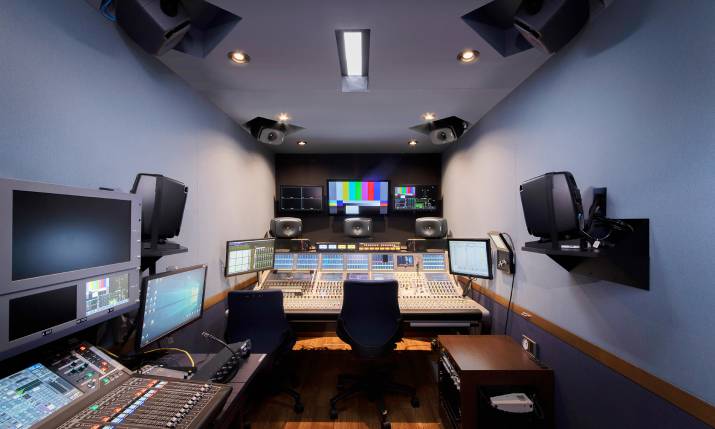Going all in: Genelec on the continuing rise of immersive audio

Asahi Television Broadcasting Corporation’s new 5.1.4 immersive OB truck, which incorporates Genelec equipment
By Howard Jones, Genelec communications director.
At Genelec we see 2024 providing a continuation of the trends that we’ve seen this year in decentralised workflows and the increased adoption of IP, cloud and immersive audio technologies.
As a provider of audio monitoring solutions, the increased focus on immersive audio in sports broadcasting is very apparent through the number of new OB vehicles that are equipping themselves for immersive, either as a result of work that they have right now, or the desire to future-proof their investment and be ready for an increase in immersive content in the near future. That was something we just weren’t seeing a few years ago, when stereo, and at a push 5.1, were seen as the standard for many. At last year’s SVG Europe Audio Summit in London, we hosted a chat session with Neville Hooper of NEP UK, who commented that “trucks which provide facilities for remote mixing are one thing, but it would be crazy to build a new broadcast truck which didn’t include immersive monitoring”.
Normal service
In fact, across all our market segments at Genelec we’re seeing immersive experiences for the public becoming normalised far beyond the original cinematic environment, with music streamers, OTT broadcasters, live concerts, games developers and visitor attractions all upping their game. That increasing exposure to more sophisticated audio experiences in daily life is, we believe, paving the way for immersive audio to become a mainstream format.
So, our expectation is that sports broadcasting will continue on that same trajectory in 2024 and beyond, helped by the increasing availability and affordability of consumer products such as Atmos-enabled Smart TVs and immersive soundbars. This is the fundamental difference between immersive audio and previous multichannel formats which struggled to gain mainstream acceptance – it’s so much easier for the consumer to ‘consume’, even in binaural form.
There’s no doubt that the ITU’s guidelines on sound formats for UHDTV and the work of the OBS in establishing Atmos as a standard for Olympic broadcasting have helped propel things forward, and the opportunities now possible for manipulating objects to create a personalised mix for the viewer are extremely exciting.
But as a manufacturer, our simple advice for those in broadcast embracing the brave new world of immersive audio is to ensure that your loudspeaker monitoring system is completely optimised for the acoustics of the space you’re working in. Producing immersive content that translates reliably across a wide range of playback environments demands a monitoring system that is carefully aligned for playback level, distance delay and frequency response – and given the sometimes challenging acoustic surroundings of an OB truck, that calibration process can yield a significant improvement in the quality and reliability of your immersive audio mixes.
And if you’re using headphones as a secondary monitoring source, investigate the solutions now available to optimise your headphone listening experience too. The possibilities presented by immersive audio are numerous, but just make sure that the tools you’re using give you the best chance of success!

